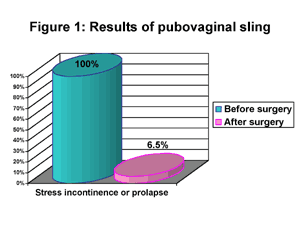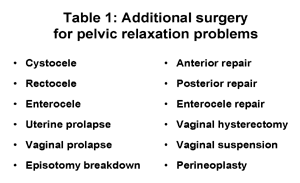- Home
- About Dr. Harris
- Urologic Conditions
-
Office Hours:
Monday - Thursday: 8 - 4:30 pm
Friday: 8 - 2 pmHe is accepting patients now!

Over the past eleven years, Dr. Harris has treated many women with stress incontinence with advanced techniques such as the pubovaginal sling and collagen implants, as well as combination procedures to reconstruct pelvic prolapse and pelvic relaxation. Surgical and medical management options have changed with advances in technology. As part of continuing medical education, Dr. Harris, attends conferences and workshops to keep abreast of new and proven techniques to improve clinical outcomes.
Minimally invasive surgery has been a central theme in incontinence surgery since the late 1980s. Initially, poor durability of suspension procedures limited satisfaction with surgical treatments. The pubovaginal sling has emerged as a remarkably durable and minimally invasive procedure for stress urinary incontinence. In 1996, Dr. Harris started utilizing the pubovaginal sling procedure which utilized the patient’s own tissue to support the bladder neck and urethra to treat stress incontinence due to urethral hypermobility. In 1998, researchers at Duke University and other centers found that tissue banked fascial tissue performed as well as a patient’s own tissue to provide support for the bladder neck and urethra, with the added benefit of much less post-operative discomfort and a more rapid return to normal activities. Dr. Harris started using allograft fascia in 1998 with continued improvement in results. In recent years, synthetic materials have been utilized to provide similar support. These procedures have similar short-term efficacy as the pubovaginal sling for providing support and are now available in the surgical menu of options for women with stress urinary incontinence due to urethral hypermobility. A clinical evaluation and comprehensive understanding of each individual patient’s situation by an experienced urologist is necessary to select the procedure best suited to the given condition.
 Of the past one hundred women undergoing sling procedures, the women who have allograft fascia slings (tissue bank human sling material) have had the best results. While most women have stress incontinence prior to surgery, several have had severe prolapse causing urinary retention, despite urethral hypermobility. Slings are placed in the setting of severe prolapse, even in the absense of incontinence, to prevent incontinence from occurring after reconstruction of vaginal prolapse. Of women with severe prolapse or stress incontinence, 93.5% report resolution of stress incontinence. Of the remaining 6.5% with mild stress incontinence, most are managed successfully with an addition of a collagen implant (see figure 1). Three quarters of women presenting for slings have associated urgency incontinence. While sling surgery is not specifically a treatment of urge incontinence, 53% report resolution of urgency following sling surgery. Eight percent of women without urgency before surgery develop new urgency after surgery.
Of the past one hundred women undergoing sling procedures, the women who have allograft fascia slings (tissue bank human sling material) have had the best results. While most women have stress incontinence prior to surgery, several have had severe prolapse causing urinary retention, despite urethral hypermobility. Slings are placed in the setting of severe prolapse, even in the absense of incontinence, to prevent incontinence from occurring after reconstruction of vaginal prolapse. Of women with severe prolapse or stress incontinence, 93.5% report resolution of stress incontinence. Of the remaining 6.5% with mild stress incontinence, most are managed successfully with an addition of a collagen implant (see figure 1). Three quarters of women presenting for slings have associated urgency incontinence. While sling surgery is not specifically a treatment of urge incontinence, 53% report resolution of urgency following sling surgery. Eight percent of women without urgency before surgery develop new urgency after surgery.
 While other aspects of pelvic relaxation typically accompany urethral hypermobility, there are often associated procedures to correct cystoceles (bladder prolapse), rectoceles (rectal prolapse), enteroceles (intestinal prolapse), uterine prolapse and vaginal prolapse. Therefore, many of our patients undergo anterior colporrhaphy (bladder suspension), posterior colporrhaphy (repair of rectocele), sacrospinous ligament fixation (suspend vagina), enterocele repair or vaginal hysterectomy (with or without removal of ovaries and tubes). On rare instance, normal voiding is delayed requiring self catheterization to empty the bladder while the bladder recovers from surgery. Most women are home eating, walking and resuming usual activitivies within 24 hours of surgery. It is notably uncommon to reoperate to correct bladder neck or urethral prolapse following a sling procedure.
While other aspects of pelvic relaxation typically accompany urethral hypermobility, there are often associated procedures to correct cystoceles (bladder prolapse), rectoceles (rectal prolapse), enteroceles (intestinal prolapse), uterine prolapse and vaginal prolapse. Therefore, many of our patients undergo anterior colporrhaphy (bladder suspension), posterior colporrhaphy (repair of rectocele), sacrospinous ligament fixation (suspend vagina), enterocele repair or vaginal hysterectomy (with or without removal of ovaries and tubes). On rare instance, normal voiding is delayed requiring self catheterization to empty the bladder while the bladder recovers from surgery. Most women are home eating, walking and resuming usual activitivies within 24 hours of surgery. It is notably uncommon to reoperate to correct bladder neck or urethral prolapse following a sling procedure.